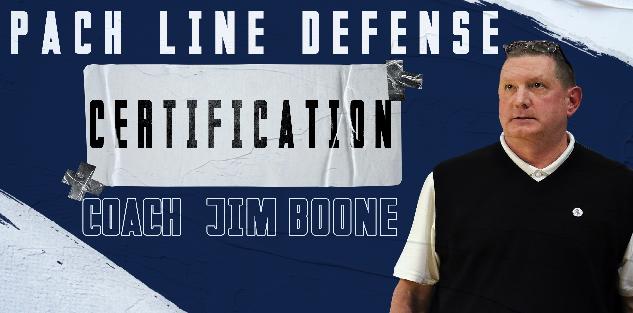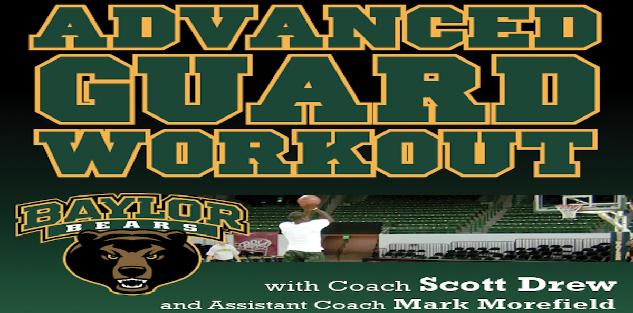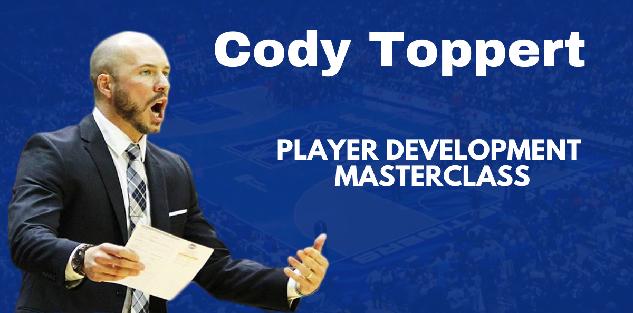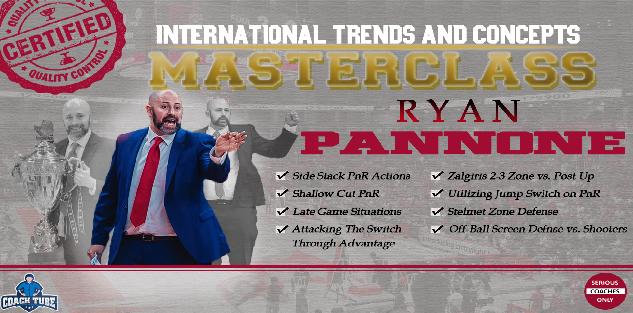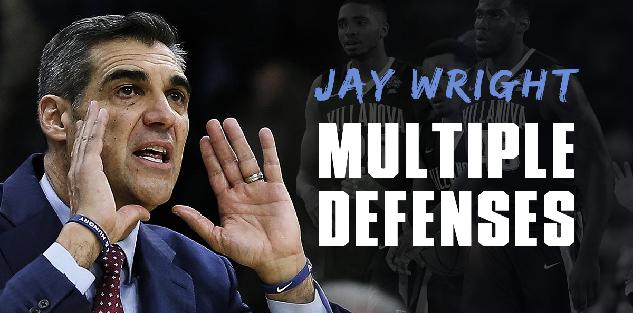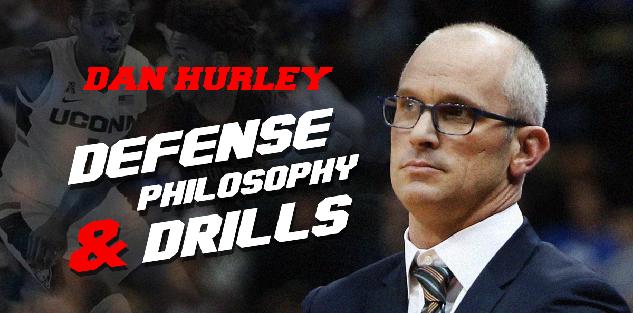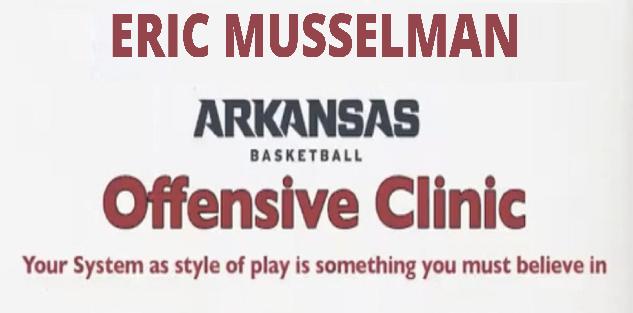Featured courses
- Two Great Game Situational Workouts For the Basketball Offseason by Grant Young
- Two Reads Basketball Players Must Understand Before Executing the Ball-Screen by Grant Young
- Two of LSU Coach Kim Mulkey’s Game-Winning Inbounds Plays by Grant Young
- Three Effective Early-Season Defensive Basketball Drills by Grant Young
- Four Essential Tips For Basketball’s 1-3-1 Zone Defense by Grant Young
- Four Zone Defense Drills to Strengthen Your Team by Grant Young
- How to Beat the Three Most Common Pick and Roll Coverages by Grant Young
- Two Drills to Improve Shooting at the Start of the Basketball Season by Grant Young
- Core Basketball Principles That Dallas Mavericks Coach Sean Sweeney Teaches by Grant Young
- Three Competitive Shooting Drills For Your Basketball Team by Grant Young
- How To Teach The ‘I’ Generation of Basketball Players by Grant Young
- Three Elite Drills to Begin a Basketball Practice With by Grant Young
- How to Build a Championship-Winning Basketball Team Culture by Grant Young
- Two of Texas Women’s Basketball Coach Vic Schaefer’s Tips For Team Culture by Grant Young
- Atlanta Dream WNBA Coach Brandi Poole’s Four Sets for Secondary Offense by Grant Young
- NC State Basketball Coach Brett Nelson’s 4 Crucial Point Guard Qualities by Grant Young
- Kentucky Coach Mark Pope’s Five Guard Rules For Offense by Grant Young
- McNeese State Basketball Coach Will Wade’s 4 Core Pillars by Grant Young
- 4 Tips To Instantly Improve Your Free Throw Shooting by Tyler Linderman
- Assemble a Championship-Caliber Basketball Rotation by Brandon Ogle
- Two of UConn Coach Dan Hurley’s Key Defensive Drills by Grant Young
- Four Post Moves All Basketball Forwards Should Have In Their Bag by Grant Young
- Four of Baylor Coach Nicki Collen’s Midseason Pick and Roll Adjustments by Grant Young
- WNBA Legend Sue Bird’s Two Tips For Attacking on Offense by Grant Young
- Houston Coach Kelvin Sampson’s Three Keys for Building a Basketball Program by Grant Young
- Two of Tom Izzo’s Top Michigan State Defensive Drills by Grant Young
- Four of Olympic Gold Medalist Coach Mechelle Freeman’s Relay Race Strategies by Grant Young
- Three Key Strategies Will Wade Uses to Build a Dominant Team by William Markey
- Five UConn Huskies Men’s Basketball Plays That You Can Use by Grant Young
- Three Tips for Maintaining Team Culture at the End of a Basketball Season by Grant Young
- Three Dribble Drive Motion Drills to Teach Your Basketball Team by Grant Young
- Three Dribbling Drills For Non-Primary Ball Handlers by Grant Young
- Four Advanced Ball Handling Drills For Basketball Guards by Grant Young
- Three Tips to Sharpen Your Post Player’s Footwork in Basketball by Grant Young
- These Three Pick and Roll Drills Are Crucial For Any Ball Screen Offense by Grant Young
- Three Closeout Drills to Improve Basketball Shooting Defense by Grant Young
- Three Tips to Perfect the Packline Defense in Basketball by Grant Young
- Four Keys to Executing the Read and React Offense in Basketball by Grant Young
- Three Tips to Develop Elite Basketball Shooters by Grant Young
- Three Crucial Keys to Executing the 5 Out Offense in Basketball by Grant Young
- These Three Offensive Sets Will Help You Beat Any Zone Defense by Grant Young
- Three Transition Basketball Drills To Play With More Pace by Grant Young
- Three 5 Out Offense Drills Any Basketball Coach Can Use by Grant Young
- Four Vital Techniques for a Motion Offense in Basketball by Grant Young
- Three Baseline Inbounds Plays To Win Your Basketball Team Games by Grant Young
- Four Drills For Sharpening the European Ball Screen Offense by Grant Young
- Three Positioning Tricks For a Basketball Zone Offense by Grant Young
- Three Rules to Perfecting Basketball's Lock Left Defensive System by Grant Young
- UCLA WBB Coach Cori Close’s Two Keys to Winning the Mental Game by Grant Young
- Four of Alabama Coach Nate Oats’ Favorite Basketball Drills by Grant Young
- Three Ways To Turn Transition Offense in Basketball Into Points by Grant Young
- Three Drills to Master Basketball's Pack Line Defense by Grant Young
- Three Transition Defense Drills to Halt Fast Breaks by Grant Young
- Four Offensive Rebounding Drills to Win Second Possessions by Grant Young
- 4 Defensive Technique Drills from Boston Celtics Assistant Coach Brandon Bailey by Marek Hulva
- 5 Drills to Improve Ball Handling by Tyler Linderman
- 13 FUNNY BASKETBALL GIFS by Alex
- BASKETBALL SPEED AND AGILITY: 8 QUESTIONS FOR COACHTUBE EXPERT RICH STONER by Jaycob Ammerman
- Defensive Strategies for Basketball by Ryan Brennan
- 4 Keys To Turning Your Program Into Championship Contender By Dallas Mavericks Coach Sean Sweeney by Marek Hulva
- 5 Components to Creating a Winning Basketball Program by Justin Tran
- Guide to Becoming a Lethal Scorer in Basketball by Justin Tran
- Zone Defense In the NBA Eastern Conference Finals by James Locke
- Mastering Court Mobility: Tips for Effective Movement in Basketball by Justin Tran
- 5 Basketball Shooting Drills: How to Develop a Sharpshooter by James Locke
- 6 Points of Emphasis for a Successful 5 Out Offense by Jaycob Ammerman
- Effective and Efficient Methods to Practice During the Basketball Season by Justin Tran
- Three Great Passing Drills From a Basketball Coaching Legend by Grant Young
- 7 Principles For Perfecting the Princeton Offense in Basketball by Grant Young
- How to Replicate A Modern NBA Offense by Grant Young
- Three Great Two-Ball Dribbling Drills For Basketball Development by Grant Young
- Two Rebounding Drills to Win Your Basketball Team Championships by Grant Young
- How to Improve Your Basketball Team’s Defense With the Shell Drill by Grant Young
- How Baylor Basketball’s Scott Drew Develops Elite Guard Play by Grant Young
- Off-Ball Movement Tips and Strategies: Lessons From the NBA Finals by James Locke
- Player Development: Scott Drew’s Tips for Producing NBA Guards by James Locke
- How to Execute a Spread Offense in Basketball by Grant Young
- Four Quality Quotes From Four Final Four Coaches by Grant Young
- A Guide to the Pack Line Defense by Alex Martinez
- 3 Defensive Build Up Drills to Improve Team Basketball Defense by Grant Young
- Battle of Two Great Coaches: Best Plays from the NBA Finals Contenders by Justin Tran
- 10 Creative Ways Athletic Programs Can Use a Video Board to Raise Money by Coach Williams
- How to Use 3 on 3 to Improve Your Basketball Team by Grant Young
- How to Defend the Pick and Roll by Grant Young
- Mastering Basketball Defense: Techniques, Drills, and Strategies for Success by Justin Tran
- Three Tips From The Coach Who Developed Giannis Antetokoumnpo by Grant Young
- 2023 NBA Draft: Skills and Technique from Top Prospects by Justin Tran
- From College to the Pros: Transitioning the Dribble Drive Offense by Justin Tran
- Positionless Basketball: Redefining Roles on the Court by Justin Tran
- Revolutionize Your Offense: Proven Concepts to Elevate Your Basketball Game by Justin Tran
- 5 Essential Fastbreak Drills Every Basketball Coach Should Know by James Locke
- How to Run a Circle Offense in Basketball by Grant Young
- Game-Changing Strategies: ATO Plays in the EuroLeague and Olympics by Justin Tran
- How to Stand Out at Basketball Tryouts by Grant Young
- How to Improve Your Basketball Team’s Transition Defense by Grant Young
- Indiana Fever GM Lin Dunn’s Two Keys For Women’s Basketball Coaches by Grant Young
- Strength Training Strategies Every Basketball Player Should Have by Grant Young
- A WNBA Basketball Coach’s Four Priorities In Transition Defense by Grant Young
- Three Adjustments to Make When Your Basketball Offense Isn’t Working by Grant Young
- Three Pillars to Applying Defensive Pressure on the Basketball Court by Grant Young
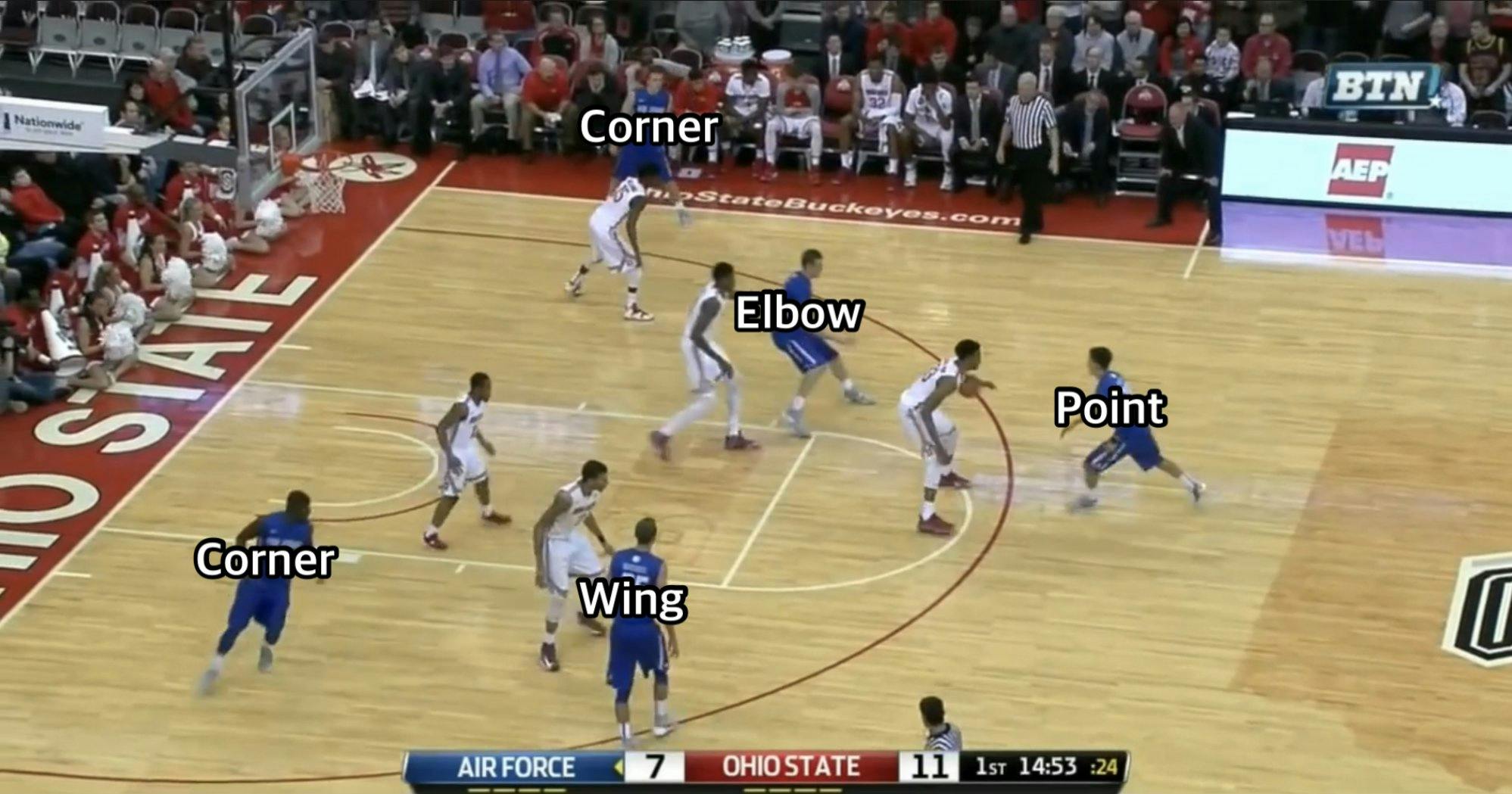
7 Principles For Perfecting the Princeton Offense in Basketball
- By Grant Young
The Princeton offense has been one of basketball’s most effective offensive systems for nearly a century.
The core principles of the Princeton offense involve perimeter players spacing along the three-point arc along with a high post player (who is commonly called the “pivot player”) setting up at or around the free-throw line. This pivot player is what makes the Princeton offense so effective. Given they have both an ability to drive into the paint and make that midrange jump shot, their position near the free throw line will force defenders away from the hoop, which will create open space in the paint for backdoor cuts from perimeter players, a layup from the pivot player, or facilitate open passing lanes for the pivot player to his teammates along the perimeter. This plethora of options has created an offensive system that has withstood the test of time.
This offensive strategy is effective because of how it emphasizes movement through constant motion, cuts, and screens, which can create confusion for the defense and facilitate them making mistakes. The offense also encourages player movement and passing, which can result in open looks and high-percentage shots. Not to mention how the Princeton offense is versatile and can be adapted to different personnel and skill sets, making it a valuable system for teams with diverse rosters and that doesn’t depend on having extremely gifted players to be utilized well.
There have been some iconic coaches who have made a career out of using the Princeton offense. And one blossoming young coach who’s in the process of doing so is Quinn McDowell.
Coach McDowell is currently the varsity boys’ basketball coach at Baylor School, a position he has held since April 2024. Before accepting this position at Baylor, McDowell served as the assistant coach at Longwood University since July 2022, where he played a critical role in helping Longwood win 20 games in three consecutive seasons for the first time in school history, and helped Longwood qualify for NCAA March Madness for the second time in three seasons.
Before Longwood, he served as an assistant coach for Lehigh University (2019 – 2022), Taylor University (2018 – 2019), and Virginia Wesleyan University (2016 – 2018).
Coach McDowell’s ‘The 7 Basic Actions Of The Princeton Offense’ course conveys an overview of the basic actions that make up the majority of the Princeton style of play while offering high-level tips for any coaches who want to maximize their offense’s potential.
7 Basic Actions of Princeton
Coach McDowell explains how there are seven basic actions of the Princeton offense:
1. ROD 1
The ROD 1 is called so because it goes to the single side of the floor. This action will stand in a typical Princeton alignment.
From there, the ball gets passed to the pivot man, and then the passer goes and sets a screen for the player in the single-side corner. Then the player receiving the screen can take a back cut, curl around the screen, or set up for a shot. The screener will then read the player’s actions and make a movement that reflects it, which should create two options for the ball handler (who can also make their own move).
2. ROD 2
The ROD 2 is the same as ROD 1 except it goes to the double side of the floor, and the screen is set for the guard along the wing.
3. REEL (Counter to ROD)
The REEL action is typically initiated with a spin dribble because the initial entry pass to the pivot player isn’t available for whatever reason. This will prompt the ball handler to dribble to the other side of the floor where there are two offensive players (and likely floor space, given a player is probably pressing on the pivot player to block an entry pass). From there, the wing player can cut down into the paint, which will leave the corner player open, create potential back cuts, and otherwise open up options for the ball handler to capitalize on.
4. CHIN

CHIN action is predicated on the pivot player setting a back-screen for one of the guards, which initiates the offensive set. This will ideally make for an easy basket off of the back screen, but it can also facilitate the ball to get swung around the wing with back cuts, potential penetration into the paint, or an open shot behind the three-point line.
If the pivot player is capable of shooting a three-pointer, this initial back screen is a great way to open them up for a shot at the top of the key as the set progresses.
5. CHEST
The CHEST action starts with the ball being delivered to the pivot player at the elbow, which then prompts the passer to set a down screen for the player in the corner. From there, this play essentially becomes a pick-and-roll without either having the ball. The screener will roll toward the basket while the person receiving the screen will head up the wing. The pivot player will have the option to pass to either player or face up and create their own offense.
6. 5-OUT
The three basic entries for the 5-out within the Princeton are the Transition (center the ball at the top of the key then go into 5-out), Elbow Pop (pivot player receives the ball at around the three-point line rather than the free throw line), and the PNP (starting with an off-ball screen from the pivot player to the opposite side wing which sets up Pick and Pop).
2-Guard
The 2-guard alignment is predicated on back-screens from the guards to the players in the corner, which sets up baseline cuts and other simple screener-to-screener actions.
In any given possession, all of these basic actions could be implemented. This is how the Princeton offense gets its variation and remains unpredictable.

